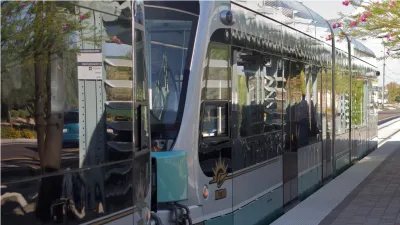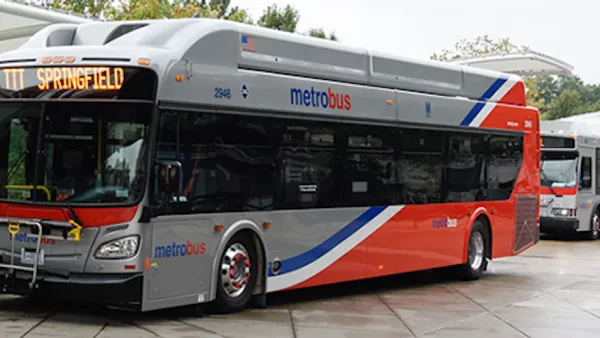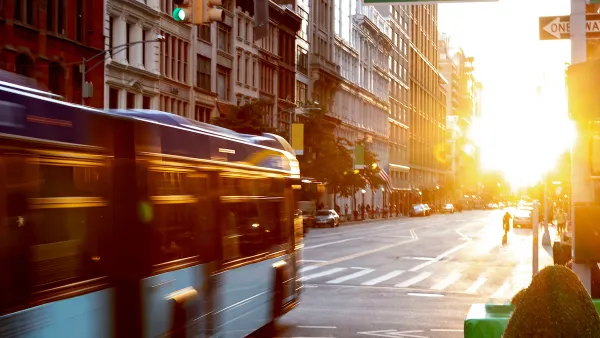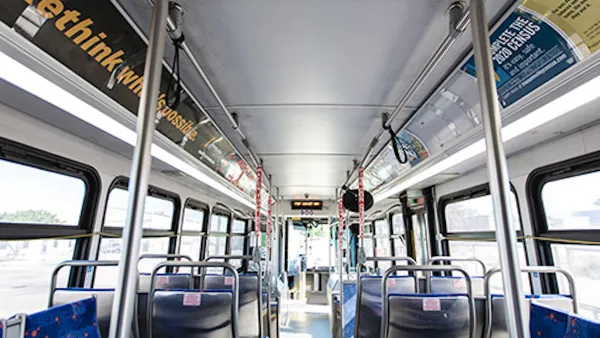With a $17 billion federal investment, every city's public transit could look like Chicago's.

With public transportation taking a beating during the pandemic, transit advocates hope that the incoming Biden administration will approve federal funding to support floundering systems and improve service across the country. New research from the Urban Institute shows that an annual investment of $17 billion into public transit systems in urban areas with over 100,000 would make most cities' transit systems comparable to that of Chicago—a standard cited by President-elect Biden in his transition plan.
In addition to providing a vital lifeline for the millions of Americans who don't own cars, transit funding has a high return on investment, writes Skip Descant. According to the report, spending 35% more on transit expenditures would yield around 131% increase in service and prop up the ailing bus systems that many essential workers depend on daily and that have experienced steep cuts during 2020. Experts fear that pandemic-induced service cuts will become permanent, causing long-term damage to the economies of entire regions.
Although public transit is often seen as a local issue, the Urban Institute's Yonah Freemark argues that Congress should treat it as a nationwide concern. While federal funds often go to major projects such as new rail lines and bridges, funneling some of this money to operational costs would help maintain and improve existing systems and temper the effects of this year's plummeting revenues.
FULL STORY: Report Stresses Transit Funding Needs Under Biden WH

National Parks Layoffs Will Cause Communities to Lose Billions
Thousands of essential park workers were laid off this week, just before the busy spring break season.

Retro-silient?: America’s First “Eco-burb,” The Woodlands Turns 50
A master-planned community north of Houston offers lessons on green infrastructure and resilient design, but falls short of its founder’s lofty affordability and walkability goals.

Delivering for America Plan Will Downgrade Mail Service in at Least 49.5 Percent of Zip Codes
Republican and Democrat lawmakers criticize the plan for its disproportionate negative impact on rural communities.

Test News Post 1
This is a summary

Test News Headline 46
Test for the image on the front page.

Balancing Bombs and Butterflies: How the National Guard Protects a Rare Species
The National Guard at Fort Indiantown Gap uses GIS technology and land management strategies to balance military training with conservation efforts, ensuring the survival of the rare eastern regal fritillary butterfly.
Urban Design for Planners 1: Software Tools
This six-course series explores essential urban design concepts using open source software and equips planners with the tools they need to participate fully in the urban design process.
Planning for Universal Design
Learn the tools for implementing Universal Design in planning regulations.
EMC Planning Group, Inc.
Planetizen
Planetizen
Mpact (formerly Rail~Volution)
Great Falls Development Authority, Inc.
HUDs Office of Policy Development and Research
NYU Wagner Graduate School of Public Service





























